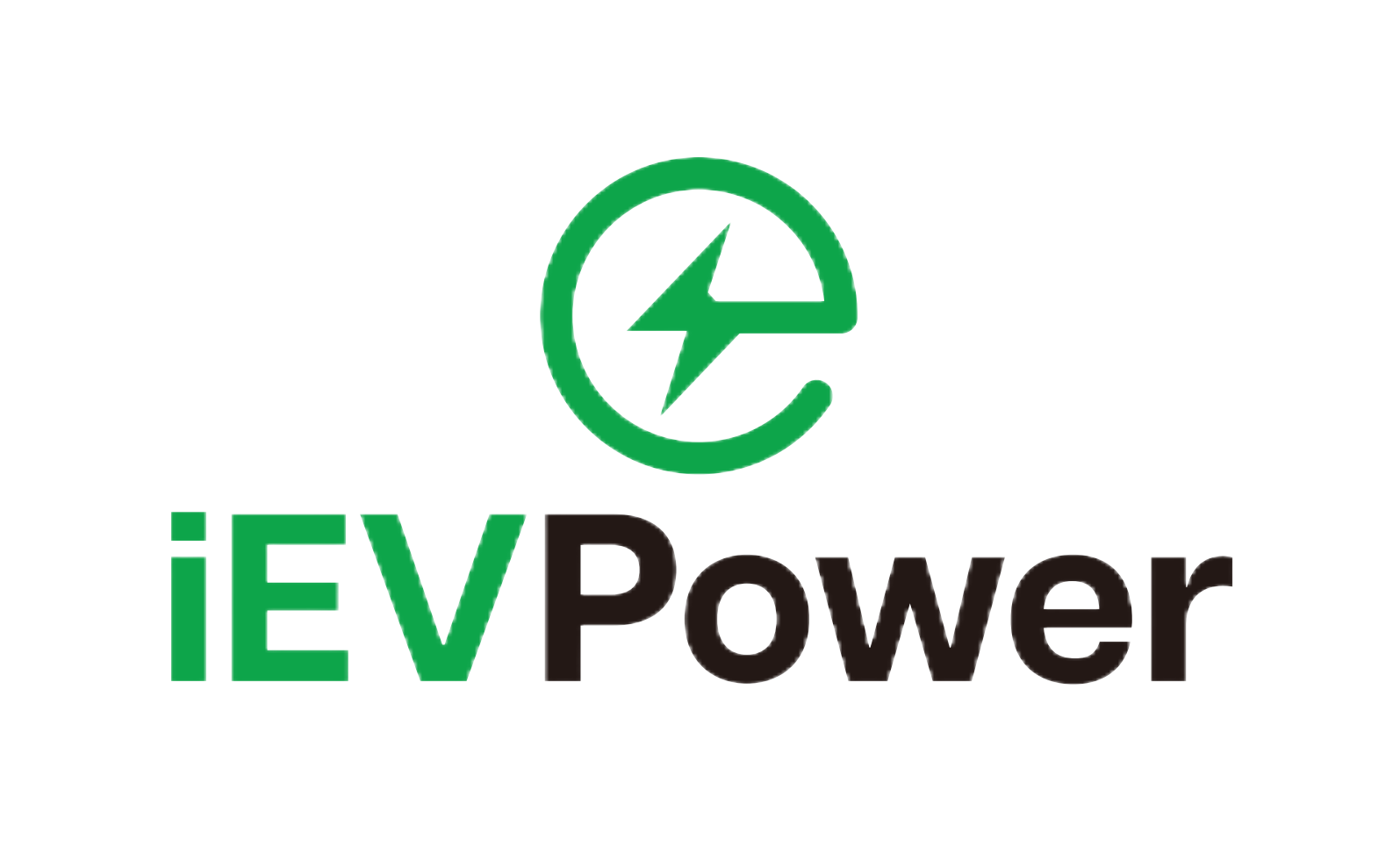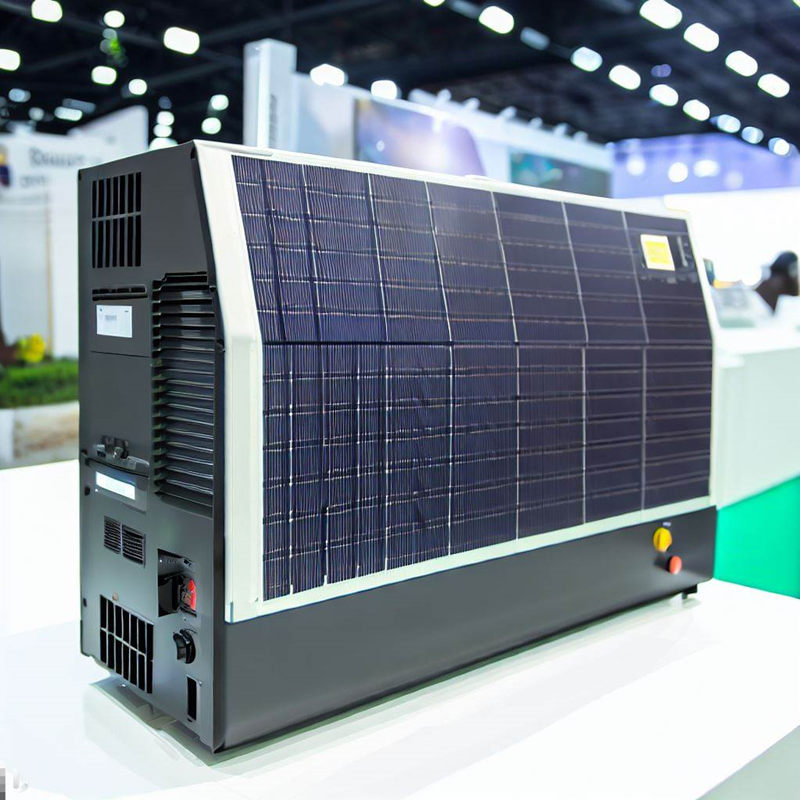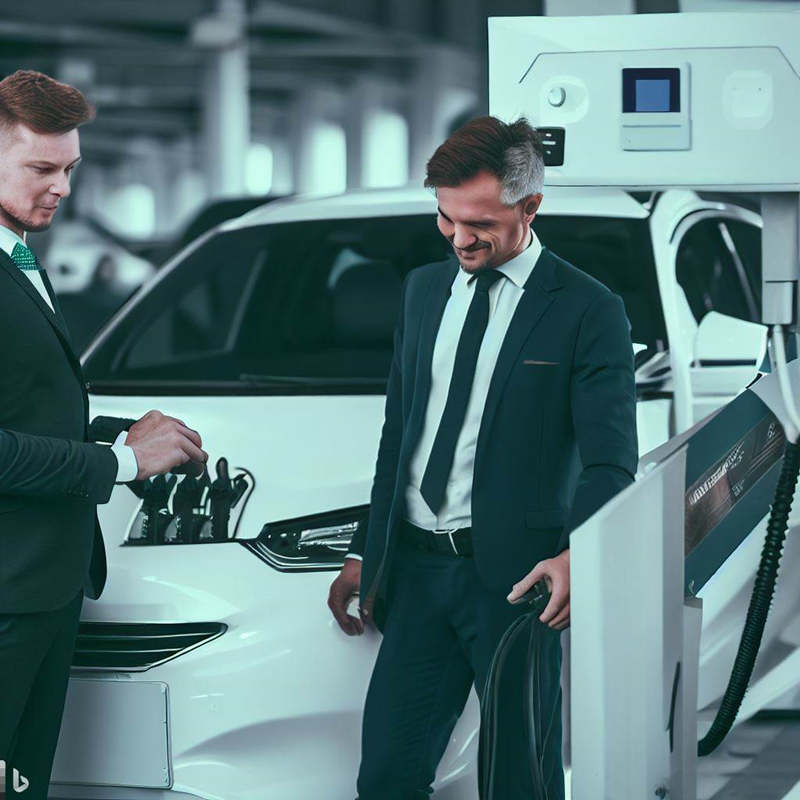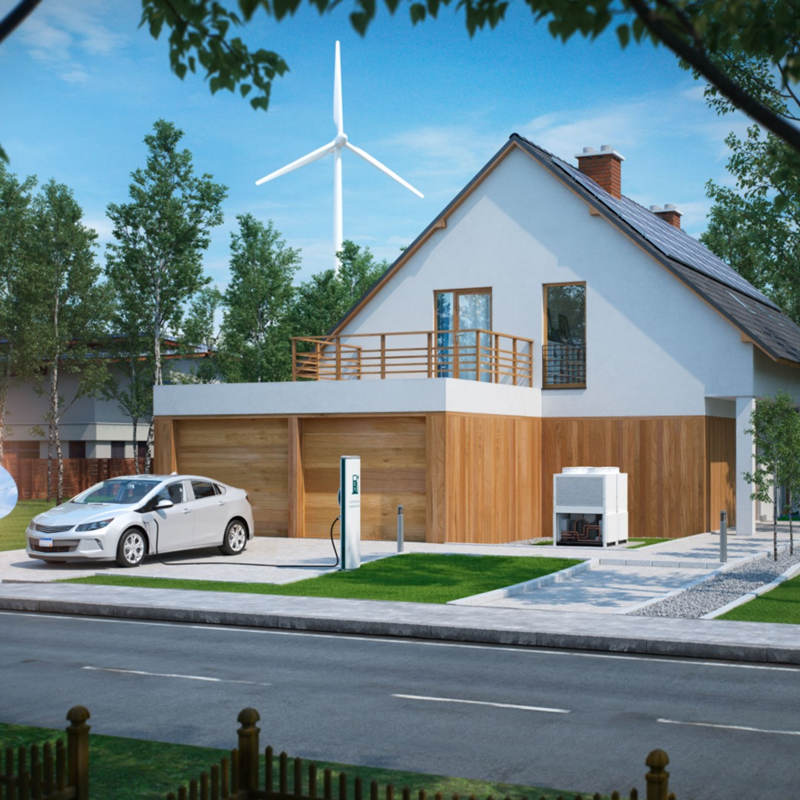- Introduction
- Types of Solar Inverters
- Factors to Consider When Choosing a Solar Inverter
- Top Solar Inverter Manufacturers & Suppliers
- Latest Technology Trends in Solar Inverters
- Conclusion
Introduction
A solar inverter, also known as a photovoltaic or PV inverter, is one of the most crucial parts of a solar power system. Its main function is to convert the direct current (DC) electricity generated by solar panels into alternating current (AC) that can be used to power homes and businesses.
Most modern appliances and electronics run on AC power, the standard for electrical transmission and consumption. But solar panels naturally produce DC power. The solar inverter transforms this into AC power that gets fed into your existing home wiring. It enables your solar panel system to connect to the grid or power essential circuits in your home during an outage.
Without an inverter, the DC output from your solar panels would be useless in terms of powering common devices like refrigerators, televisions, air conditioning units, and most household electronics. So you can think of a solar inverter as the critical link that allows solar panels to work with and complement a traditional power grid. It makes the energy generated by the sun readily available for everyday use and consumption.
In summary, a solar inverter plays an indispensable role in harnessing the energy from the sun and making its use practical in homes and businesses with AC power grids. It unlocks the potential of your solar panels and is a fundamental piece of technology for taking advantage of renewable solar energy.
Types of Solar Inverters
- String inverters: Most common, good for small systems
- Microinverters: Module-level conversion, good for shady roofs
- Power optimizers: Module-level DC-DC conversion but single AC inversion
String inverters: String inverters are the most common and inexpensive type of solar inverter. They are good for small to mid-sized solar panel systems. A string inverter converts the DC power from multiple solar panels at once. It connects panels in “strings” of 3 to 10 panels each. String inverters are simple but if just one panel in the string is underperforming due to shade or dirt, it can affect the output of the entire string.
Microinverters: Microinverters perform inverter duties at the individual solar panel level. Each panel has its own dedicated microinverter that converts the DC to AC power. They are good for systems with panels that may be exposed to shading or orientation challenges. So if one panel is not performing, it does not affect the others. However, microinverters tend to be more expensive than string inverters and may require more maintenance.
Power optimizers: Power optimizers are module-level power conditioning devices that convert DC power to DC power. They are connected to each solar panel but there is still a single central inverter that converts the DC to AC for the whole system. Power optimizers can help maximize power harvest from individual panels the way microinverters do but at a lower cost with only a single inverter. They require management of the power optimizer devices though which can increase complexity.
In summary, you have options when it comes to inverting the direct current from your solar panels into alternating current for use. The appropriate solution depends on your specific solar installation needs, priorities, and budget. But no matter the choice, inverters play an essential role in solar energy systems.
Factors to Consider When Choosing a Solar Inverter
Here are some of the key factors to consider when selecting a solar inverter:
Size: Choose an inverter that matches the power output of your solar panel array. It should not be too large or too small for the number of panels you have. The inverter size is specified in watts, so determine your total solar panel wattage to choose an appropriately sized inverter.
Waveform: A pure sine wave inverter produces a smooth AC power waveform that is compatible with all devices. Modified sine wave inverters are cheaper but can interfere with some electronics. So a pure sine wave inverter is typically better.
Efficiency: Solar inverter efficiency is a measure of how much of the DC power from the panels is converted into usable AC power. Higher efficiency means less power is lost during the conversion. Look for an inverter with 95% efficiency or greater.
Maximum power point tracking (MPPT): MPPT is an electronic tracking system in the inverter that helps optimize power generation from the solar panels. It is essential for extracting maximum performance from your system.
Warranty: A good inverter warranty will last at least 10 to 20 years to match the lifespan of your solar panels. Some microinverter warranties may be shorter, around 5-10 years. But longer is better.
Price: Inverters vary in price based on their size, features, and performance. While higher quality and higher output inverters will cost more upfront, they can be worth the investment to maximize efficiency and performance in your solar system. But you need to balance cost and benefits for your situation.
In summary, choosing the right inverter for a solar system depends on judging how all these factors align with your specific needs and priorities. But in general, going with a appropriately-sized, high-efficiency inverter with pure sine wave, MPPT, and a long warranty is the best approach, even if the upfront cost is somewhat higher. A good inverter is essential for a high-functioning solar power system.
Top 15 Solar Inverter Manufacturers & Suppliers
SMA Solar Technology AG
SMA Solar Technology AG is a global supplier of solar energy equipment specializing in producing and manufacturing solar inverters and converters for photovoltaic systems. Their other offerings include intelligent energy management, battery-storage solutions, digital energy services, and maintenance services for PV diesel hybrid applications. The company is driving technological progress and has set up flexible manufacturing plants for solar inverters in Germany and North America.
SMA has been setting technological trends and driving the development of renewable energies for 40 years, with groundbreaking inverter technology that has contributed to the shift to renewable energies worldwide. Its mission is to help shape the energy supply of the future with innovative solutions for every type of photovoltaic application.
As we enter the digitization age of the energy industry, SMA plays a crucial role in connecting photovoltaics with storage, e-mobility, and other sectors to integrate them into the entire system. SMA is a sought-after partner for leading companies from different areas due to its vast experience and comprehensive expertise. SMA’s sophisticated system solutions are tailored to the needs of the “electricity prosumers” of tomorrow.
SMA Solar Technology AG has been listed on the Prime Standard of the Frankfurt Stock Exchange since 2008 and in the TecDAX and SDAX indexes. The company’s technology has won multiple awards and is protected by approximately 1,700 patents and utility models.
SolarEdge Technologies Inc
SolarEdge is a global leader in innovative energy technology, providing intelligent inverter solutions that maximize power generation while lowering the cost of energy the PV system produces. Established in 2006, SolarEdge developed the DC-optimized inverter solution that changed how power is harvested and managed in photovoltaic systems. SolarEdge offers inverters, optimizers, monitoring equipment, tools, communication devices, and intelligent energy management solutions for residential, commercial, and large-scale PV installations.
Since its IPO on the NASDAQ in 2015, SolarEdge has shown significant growth in revenue and gross margin, making it a preferred partner for industry-leading installers, integrators, and other energy market participants. The company addresses a broad range of energy market segments through its diversified product offering, including energy storage and backup solutions, EV charging, home energy management, grid services, and uninterrupted power supply solutions. SolarEdge’s financial strength, combined with its cutting-edge technology, ensures that they continue to advance intelligent energy and drive future progress.
Delta Energy Systems Inc
Delta Energy Systems is a subsidiary of Delta Electronics, founded in 1971. The company provides power and cooling solutions to reduce environmental impact. Its mission is to deliver innovative and energy-efficient solutions for a sustainable future.
Delta Energy Systems operates three business divisions: power electronics, automation, and infrastructure. Since 2003, it has been part of the Delta Group, known for automotive, industrial, medical, electric vehicles, and IT networking solutions.
Delta Energy Systems utilizes quality technology and customized designs for specific applications as a solution provider. In response to climate change, Delta remains dedicated to developing energy-saving products, solutions, and services that contribute substantially to human progress.
Delta Energy Systems manufactures electronic components like coils and transformers for its power electronics, automation, and infrastructure divisions. It primarily serves global automotive, industrial, medical, electric vehicle, and IT networking clients. Beyond this, the company aims to provide innovative, eco-friendly, energy-efficient solutions to decrease environmental impact.
All Delta Energy Systems locations are passionately committed to this mission. The company uses sustainable buildings with features like electric vehicle charging and solar panels. Most designs are tailored to particular needs and requirements. The mission statement addresses critical issues like climate change through clean, energy-efficient solutions.
Enphase Micro-Inverter
Enphase Energy transformed solar in 2006 with microinverter technology converting sunlight into reliable, scalable energy. Their intelligent microinverters work with nearly any panel. They were paired with award-winning batteries, and Enphase powers one of the best clean energy systems.
As photovoltaic demand rises, microinverters are preferred to string inverters. Enphase leads the market, allowing monitoring of each panel separately and warning of issues. Compatible with most conferences, their 25-year warranty provides coverage.
Enphase’s system helps people make, use, store, and sell power. Their app provides unprecedented data and control. People get paid for clean energy produced and shared for the first time, building a future harnessing the free, abundant sun to replace fossil fuels ultimately.
With over 58 million microinverters on 3 million homes in 145 countries, Enphase provides access to affordable, clean, reliable energy and jobs for a carbon-free future. Enphase puts people and their power at the center of our shared energy future.
Giandel Power Inverter
Giandel leads in power inverters, integrating innovation and quality for 10 years. They provide pure and modified sine wave inverters, using first principles thinking for competitive pricing. They sell directly in Australia, Germany and the US, saving costs.
Committed to high customer satisfaction through quality and support, Giandel is expanding worldwide. They believe their high-quality, budget-friendly inverters with battery chargers and automatic fans will soon be popular in more countries, though currently offering a minimal 12-month warranty.
Unbound Solar
Unbound Solar is a 100% employee-owned company providing tailored renewable energy solutions and lifelong support empowering individuals, communities, and businesses to control the way they harness clean energy. Founded in 1998 with a do-it-yourself approach, they have successfully extended their roots as one of the leading online solar solutions providers.
With access to equipment from over 50 manufacturers, they offer personalized solutions that meet customers’ needs while providing subject matter expertise, in-depth design technician collaboration and lifetime support. Unbound Solar has partnered with thousands of customers for nearly 30 years, helping them achieve their solar electric system goals.
Renogy Renewable Energy Semiconductor
Since 2010, Renogy’s mission is changing energy use and enabling sustainability. They aim to empower 50 million in energy independence with DIY solar products by 2030.
Starting at Louisiana State University, Renogy grew with support. Their mission remains though products and business developed.
Believing people can achieve sustainability using renewables, Renogy drives sustainable living and independence. Their solar products reduce carbon footprint and dependence on utilities.
The Renogy store provides affordable off-grid solar components with support and education. Continuous R&D provides industry-leading innovations. Their community works toward sustainability.
Monitoring solar appliances and sharing experiences, Renogy Power Plus offers more. Renogy’s advanced inverters and inverter chargers lead, with power-saving modes, monitoring connectivity, and automatic power transfer.
Fronius International
Fronius, a global leader in innovation and technology, has been providing high-quality grid-connected solar power inverters and battery chargers since 1945. They have won several awards, including the Frost & Sullivan Best Practices Award 2008 and the Best Product of the Year 2013’ Plus X Award.
Fronius is committed to researching, developing and implementing innovative methods to monitor and control energy. Their products increase yields, reduce operating costs, and lay the foundation for growth and successful development. Fronius has grown from a one-man operation to a player on the global stage with 37 subsidiaries on five continents.
Sungrow
Sungrow is one of the top 5 solar power inverter manufacturers, despite only being founded in 1997. They are the largest manufacturer of string inverters in China and have installed over 3,000 MW worldwide. Their inverters are reliable and efficient, operating stably in various environments.
With the largest R&D team in the industry, Sungrow offers a wide product portfolio of PV inverter solutions, energy storage systems and other renewable energy solutions. They have invested in an in-house testing center approved by SGS, CSA, and TÜV Rheinland and have a global annual production capacity of 305 GW.
Yaskawa Solectria Solar
Solectria Renewables, LLC was founded in 2005 as a spinoff of Solectria Corporation, with the aim of manufacturing high-efficiency power electronics for renewable energy. They later became the leading commercial solar inverter manufacturer in the US, and in 2014 were acquired by Yaskawa America, Inc. and renamed Yaskawa Solectria Solar.
They offer a range of advanced solar inverters, string combiners and monitoring systems for solar systems of all sizes, including three-phase utility-scale and external transformer PV inverters. All are made in the USA and compliant with the Buy American Act (BAA), backed by Yaskawa’s over 100 years of power electronics experience.
RENAC Power
RENAC Power is a leading manufacturer of on-grid inverters, energy storage systems, and smart energy solutions. Their products have a track record spanning more than 10 years, delivering higher yields and ROI for customers globally. They strive to constantly improve their efficiency and performance through ongoing research and development, with a focus on both residential and commercial markets.
With a clear vision, they remain at the forefront of solar energy and are committed to supporting their partners in addressing any commercial and business challenges. RENAC Power’s goal is to be a top cooperation team and dominator company for personnel, suppliers, and customers alike.
KACO New Energy
KACO new energy is a medium-sized company with a passion for research and high-quality engineering skills in the field of independent and decentralised energy supply. Their goal is to support the use of renewable energies and efficient energy management worldwide. KACO new energy actively shapes the energy world of tomorrow by implementing projects with a commitment to quality and continuous product development.
Since April 2019, KACO new energy has been a subsidiary of Siemens AG and benefits from their exchange on topics such as building technology, electromobility and energy storage. KACO new energy offers solutions at the grid edge to optimize energy efficiency in an intelligent and sustainable manner.
Shenzhen Growatt New Energy Technology Co
Shenzhen Growatt New Energy Technology Co., Ltd is a leading manufacturer of highly efficient and cost-effective inverters and energy storage solutions, with an international reputation. The company was founded in 2010, and within 18 months had become a popular smart inverter manufacturer, and the only one to receive direct investment from Sequoia Capital.
Growatt offers a wide range of solar inverters from 1kW to 2.52MW, suitable for both grid and off-grid systems, and its ‘Smart Home’ energy management system is applicable to all. Growatt has over 500 experienced R&D engineers, with more than 60 patents, and holds over 20 certifications worldwide. Its highly efficient sales and support team provides reliable technical and maintenance support globally. Growatt products are characterized by outstanding quality and high efficiency.

UK Solar Power
UK Solar Power is a UK-based company that was established in 2014 by a team of experienced directors who aimed to create a quality-assured brand in the renewable energy market. The company offers British and European standard solar products installed globally, including Electric Vehicle charging points, and PV solar Maintenance and installation services.
UK Solar Power is known for its exceptional quality, full transparency, and rigorous production process. The company helps homeowners and businesses reduce energy bills and carbon emissions by generating their electricity through solar panels, which are cheaper than grid cost and environmentally friendly.
Cambridge Solar Ltd
Cambridge Solar is a UK-based company founded by Owen Morgan, who has been working in the renewable energy industry since 1999. The company specializes in designing and installing high-quality solar pv systems using inverters from four leading manufacturers: Solar Edge, Fronius, Enphase, and SMA. Cambridge Solar aims to provide the best value for money while offering exceptional technical knowledge, transparency, and customer service. The company has grown into one of East Anglias most established and experienced solar panel installers with hundreds of solar pv systems installed worldwide.
Latest Technology Trends in Solar Inverters
Artificial intelligence and energy management: Newer solar inverters are incorporating artificial intelligence and smart energy management functions. They can automatically adjust settings to maximize solar energy usage and dispatch power efficiently based on usage patterns. AI may help solar-powered homes become autonomous energy producers and consumers.
Module-level inverters and power optimizers: Microinverters and power optimizers located at each solar panel are becoming more advanced, affordable and popular. They provide panel-level control and conversion which leads to higher system output overall, especially where panels are in different environmental conditions. Power optimizers are a lower-cost alternative to microinverters with similar benefits.
Hybrid inverters for solar-storage systems: As battery storage becomes more commonly paired with residential solar power systems, hybrid inverters have been developed to work with both PV and storage. They can convert both DC power from the solar panels as well as the battery storage to AC for maximum efficiency. They allow for off-grid solar backup power as well seamless transitioning between grid-tied and off-grid modes.
Smart inverters with remote monitoring: Newer solar inverters often have built-in WiFi and internet connectivity which allows for remote and automatic monitoring and management. They can track system performance in real-time, notify owners of any issues, download and install software updates, and allow some control over the system using mobile devices or computers. This makes management and optimization of solar-powered homes more convenient and efficient.
Overall, continued progress is being made in solar inverter capabilities through the integration of advanced technologies like AI, smart controls, module-level conversion, and connectivity. As inverters become smarter, more powerful and capable of interfacing with batteries and the grid, solar energy systems are able to reach higher levels of performance, optimization, and energy independence. The inverter plays a key role in enabling the latest hybrid, off-grid, and autonomous solar-powered technologies and applications.
Conclusion
In conclusion, when selecting a solar inverter, take the time to understand the options and determine what capabilities will serve your priorities best. While price is always a consideration, the most affordable inverter is not always the best choice for the long-term benefits, performance and potential of your solar panel system. With an inverter that suits your needs, a whole new world of clean, renewable energy can be unlocked.






